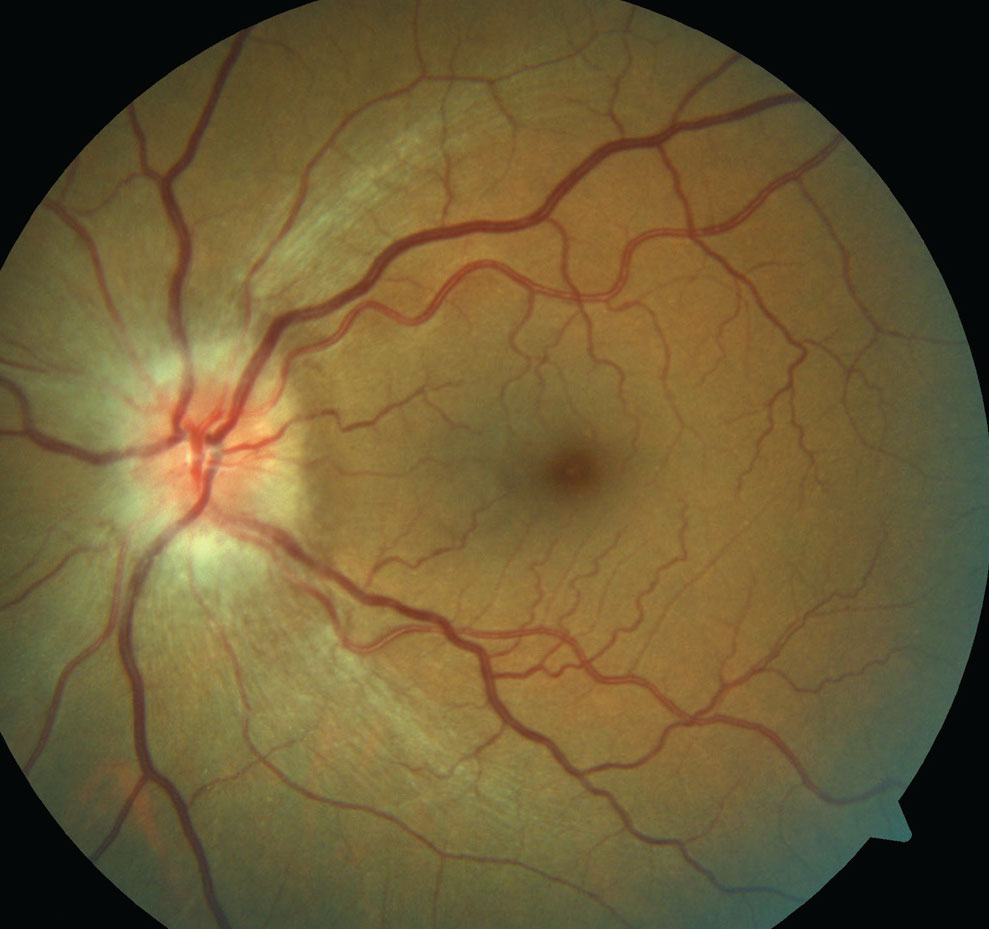 |
| Researchers suggest that the volume of fluid generated acutely by ischemic processes at the optic nerve head may be a key determinant of the appearance of subretinal fluid. Photo: Michael Trottini, OD, and Candice Tolud, OD. Click image to enlarge. |
The presence of retinal fluid is associated with vision deterioration for some diseases, but it may not have much effect on visual acuity for individuals with non-arteritic anterior ischemic optic neuropathy (NAAION), according to a paper published recently in Ophthalmology.
Medical records of 32 patients (mean age 60, 65.6% male) with NAAION were reviewed, and a total of 21 eyes (46.7%) had retinal fluid. The researchers categorized the macular OCT findings according to fluid localization, finding 19 cases of parafoveal fluid (including nine cases with concomitant subfoveal fluid), one case of subfoveal fluid alone and one case of peripapillary subretinal fluid alone. The researchers also reported that specific patterns of optic disc swelling were associated with both the occurrence and distribution of retinal edema.
The patients’ visual acuity, visual field loss and foveal thresholds remained stable throughout the observation period, and there were no differences in visual function at six months between patients treated with or without corticosteroids.
Based on these findings, the researchers wrote in their Ophthalmology paper that no management changes are warranted in NAAION patients with subretinal fluid. “Our findings confirm only a non-significant upward trend in visual acuity recovery in the subgroup of patients with subfoveal fluid. The detection of subretinal fluid in the acute assessment of NAAION may have little or no influence on prognosis. Furthermore, corticosteroid intake at presentation did not affect visual recovery in our cohort.”
As for NAAION pathogenesis, the researchers proposed that “the volume of transudate generated at the optic disc is a critical factor rather than dysfunction of retinal mechanisms subserving reabsorption, which may be the case in primary retinal disorders.”
Chapelle AC, Rakic JM, Plant GT. The occurrence of intra- and sub-retinal fluid in anterior ischemic optic neuropathy: pathogenesis, prognosis and treatment. Ophthalmology 2023. [Epub ahead of print]. |

